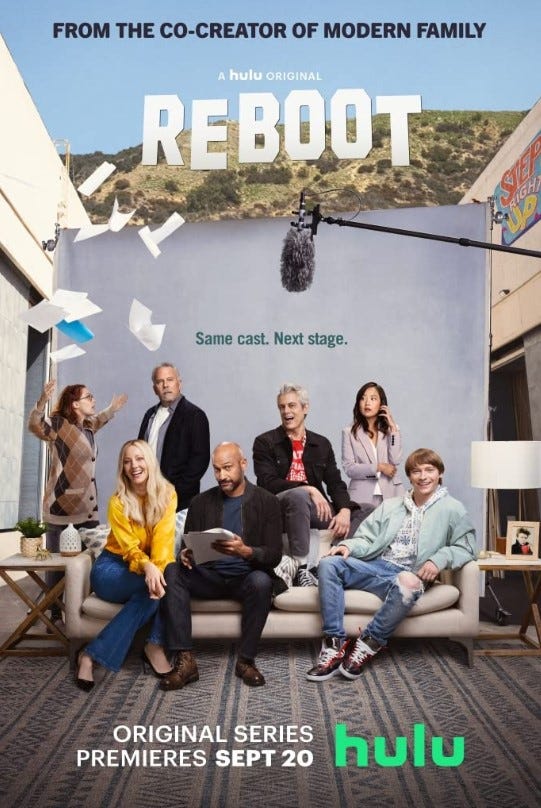Long before I had this newsletter as an outlet, I obsessed over choosing things to like.
Classical crossover was one of my interests/passions for most of my teenage years, and I carefully selected my “favorite” songs as if I would be bound to that list forever. I collected CDs, priding myself on the UK imports, and listened to my favorites on my CD player in my bedroom over and over.
For the uninitiated, classical crossover is a music genre invented by the English soprano Sarah Brightman, because when you originate the role of Christine Daaé on Broadway, you are allowed to invent an entire new genre of music afterward. Classical crossover is a mercurial genre. It’s not pop, although pop songs and pop elements are included. Operatic arias are often sung, but it’s not opera. Interpretations of show tunes are common, but it’s not musical theater. Singers are typically classically trained, but the way they sing is not — strictly speaking — classical. Voices should be supported by proper breathing, but the singing is not full force. It’s more gentle, more restrained, and the vibrato you hear is typically more bell-like, less firehose, than what you’d get if you attended an opera.
To give an example that shows the genre’s range: For her bestselling album Pure, classical crossover artist Hayley Westenra sang both “In Trutina” (a medieval poem in Latin that virtually every classical crossover soprano has sung at some point) and a cover of Kate Bush’s “Wuthering Heights.”
At its best, classical crossover holds the comfort of an old hymn, the arcing beauty of an aria, the catharsis of a show tune, and the bittersweetness of an Irish ballad — all on the same record.
But after all that explanation of what you can love about classical crossover, here is the plot twist: I loved this genre, until one day I didn’t. I don’t remember the exact day or time, but at some point in my late teens, I stopped listening to classical crossover music at all. I went from obsessing over when the next Hayley Westenra album would come out, praying Charlotte Church would return to her classical roots, and rewatching my DVD copy of Celtic Woman: A New Journey to … nothing. I’d listen to a Christmas album here and there, around the holidays, but I didn’t feel that tug, that interest, let alone any kind of passion.
Classical crossover was One of the Things I Like, until it wasn’t. But even when I went through a tidying up phase, even after moving my CD collection more than once, I kept everything.
(Quick disclaimer on my “click-y” subject line: Marie Kondo seems like a lovely person, and I’m a big fan of her “tidying up” approach. I highly recommend going through everything you own if it’s been a while — I’m certain you’ll realize you’re keeping objects around your house that actively bring down your mood and you’re squirreling away things that should be displayed and treasured.)
Even though the individual CDs didn’t “bring me joy” in the sense that they once had, I kept them because they reminded me of a past self who had discovered an interest and passion and found fulfillment and joy in exploring it. The beauty of these songs and an appreciation of the human voice as a glorious instrument sank into my young bones, and the music became part of me even when I wasn’t actively exploring it anymore. There was a joy in keeping a tangible reminder of my old self, even if I didn’t relate to her anymore.
Fast-forward fifteen years (and if you read my last newsletter, you knew this was coming): I am low-key obsessed with classical crossover again. I’ve pulled out all my old CDs and bought more. I’m accessing fascinating parts of my memory that stay sealed until the opening strains of an aria I once loved (and can love again) opens something and all of a sudden I can sing along (in very rough French!) to a song I haven’t listened to in fifteen years.
I’m not sure what the creative lesson is in all of this, except to say: Be patient. Follow what you like, and when it seems as if the trail has stopped, it’s OK to turn around and find another path. If you’re meant to come back to this interest after years or even decades, you will.
Recommendations: What’s inspiring me
Reboot (Hulu Original) — I’m going out on a limb by recommending this show when I’ve only watched the first three episodes, but I feel safe in saying that it had one of the best pilots I’ve ever seen.
Reboot is about a (fictional) early 2000s sitcom that Hulu is rebooting with its dysfunctional original cast. It’s a little dark, very quirky, and meta enough to be funny without getting overly self-conscious. So far, I’m having a great time watching it.
For fans of Mythic Quest and 30 Rock.
Sheng Wang: Sweet and Juicy (Netflix Original comedy special) — It’s been a while since I enjoyed a standup comedy special this much. Sheng Wang’s accessible, laidback, genuinely laugh-out-loud-funny hour of comedy was exactly what I needed to de-stress after a long day. Standup is hard work, but he makes it look so easy.
For fans of Sam Morril and Anjelah Johnson.
Out There: Stories by Kate Folk — As I have said many many times before, weird and dark short story collections are firmly in my reading wheelhouse. In this near-future collection, women navigating dating apps fear being taken in by a handsome and charming “blot”; roommates discover the literal heart of the house they’re renting; and a new relationship is put to the test with a holiday family tradition of inflicting pain. I loved it.
For fans of One More Thing: Stories and Other Stories by B.J. Novak and Lesser Known Monsters of the 21st Century by Kim Fu.






